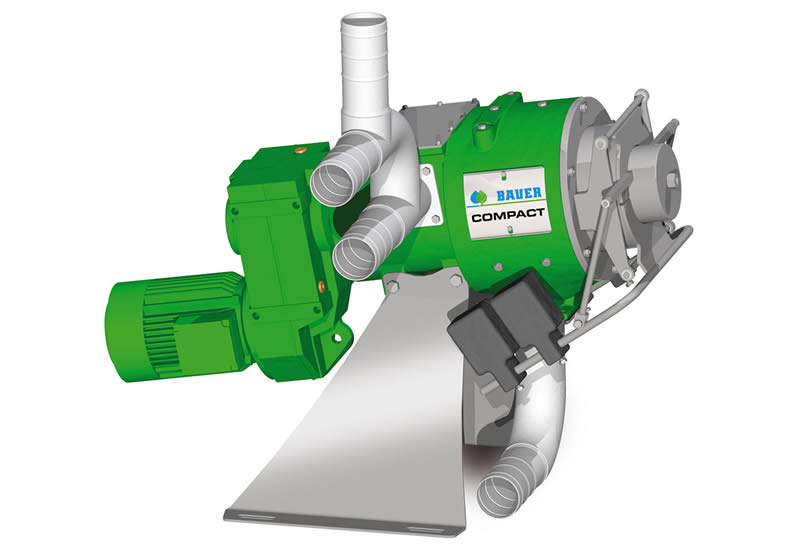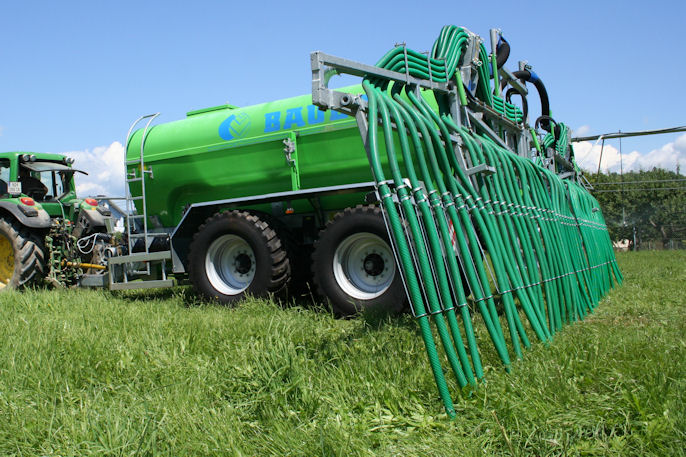
A new small-size screw press separator opens the way for smaller dairy and pig farms to manage and utilise farm slurry more effectively.
With a typical output of around 5cu m per hour for cattle slurry and 7-10cu m for pig slurry, the Bauer Compact can be run at night on cheap-rate electricity to separate slurry into its liquid and solid fractions, significantly reducing demand for traditional slurry storage capacity. The liquid fraction can be pumped to a lagoon for application by a small mobile irrigator or by tanker, while the solid fraction can be stockpiled for application by a traditional spreader.
“We already have a comprehensive range of separators but the new Compact is a cost-effective option for dairy herds of up to 150 cows or so,” notes Adrian Tindall, Bauer UK & Ireland sales manager. “Slurry separation is an established technique that eases storage demands and makes better use of slurry as a resource but it hasn’t been available to smaller farms; the new Compact changes that.”
The Bauer Compact separator is smaller and lighter than the established S655 for up to 400-cow herds and the S855 for herds with more than 400 cows. But it is no less well engineered, with a short but tough cast iron housing that encloses the press screw and 360 degree screen.

Slurry is fed into the housing from one side and pushed to the front by the screw, which is driven at just 19rpm by a 3kW electric motor through a reduction gearbox. A continuous plug of fibrous material is formed at the end of the housing where weighted outlet flaps regulate the pressure.
These can be adjusted to balance output, the consistency of the incoming slurry and the dry matter content of the separated fibrous material, which typically will be between 20 and 28%.
Liquid is extracted through a choice of 0.25mm to 1mm slotted screens and drains via a pipe emerging from beneath the screw housing to a storage tank or to a sump from where it can be pumped to a ‘dirty water’ lagoon. The solids fraction is normally stockpiled in a bunker beneath the separator.
The small size of the Compact – it weighs 420kg and measures just 1.3m in length by 0.7m wide and stands 1m high – means it is easier to install as part of a waste management system.
“It also costs less – around £10,000 compared with the higher output S655 and S855 at £17,000 to £23,000,” says Adrian Tindall. “Pipes, fixtures and fittings, and a control panel will only add around £3500, maybe more depending on the situation. So with the low running costs there is potential for a quick payback from being able to utilise the nutrient and organic matter content of slurry more effectively than when it’s kept whole.”
